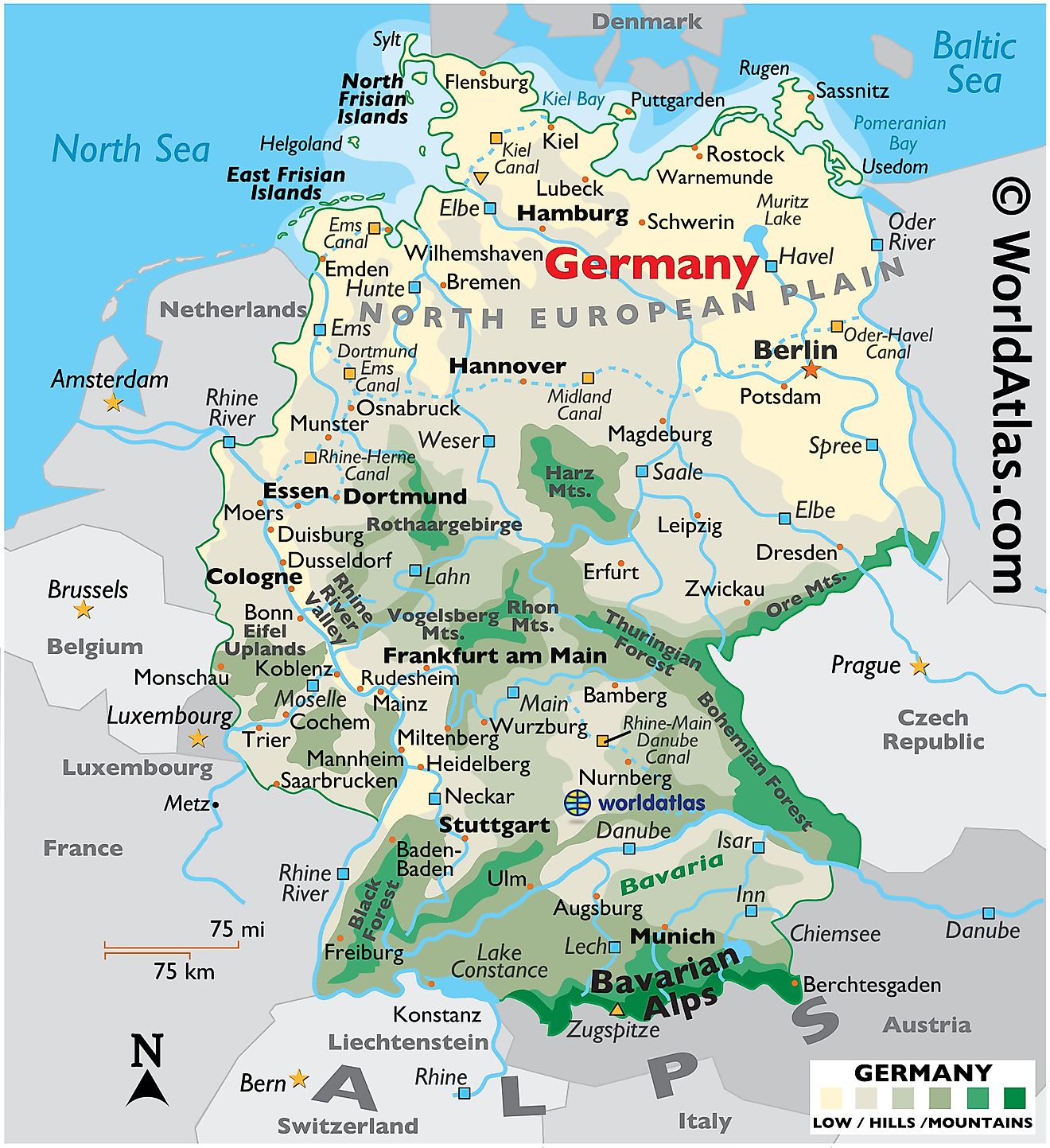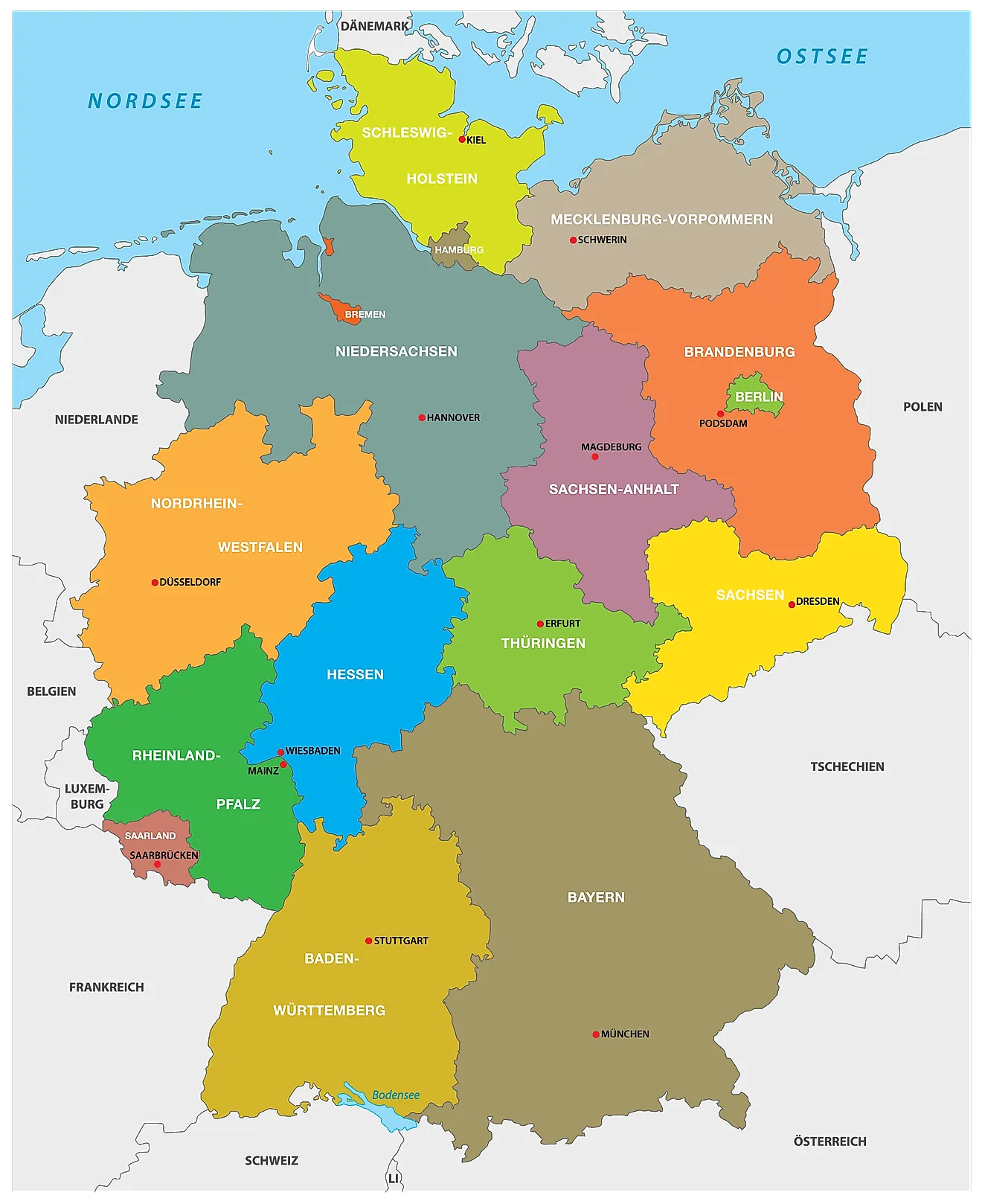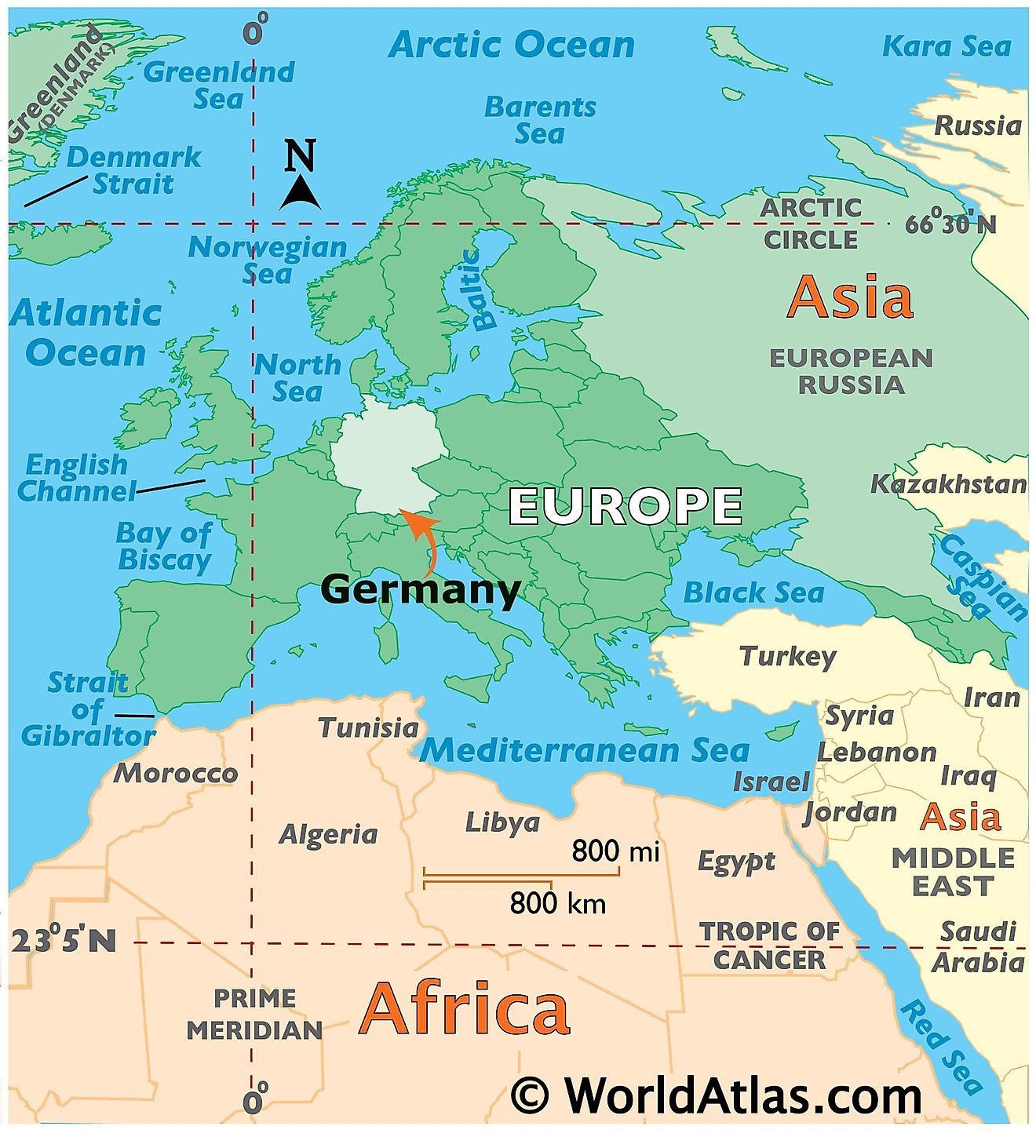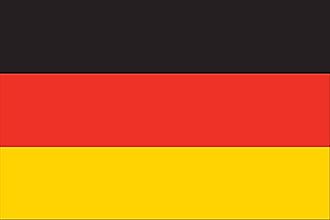what is a drunken forest and what does it have to do with the topography of eastern europe
Maps of Germany

By size, Germany is the seventh-largest European country. It covers an expanse of 357,022 km2(137,847 sq mi). Equally observed on Deutschland's physical map, the land'southward topography varies significantly from northward to south.
The North European Patently extends across the land's northern reaches; this flat, lowland terrain is dissected past numerous bogs, rivers and streams, and is by and large used every bit farmland.
The N Sea coastline is a low, marshy wetland with dikes, mudflats and scattered islands. The Baltic Bounding main is hillier with some jagged cliffs. Rugen, Frg's largest island, is forested and rather hilly with cliffs and sandy beaches.
In the northeast, and then stretching to the south of Berlin, Germany's state remains sandy and punctuated by dozens of more often than not minor lakes formed past retreating glaciers during the last Ice Age.
The state so rises into the forested uplands of central Germany. Major landforms here include the volcanic in origin Harz Mountains and the thickly wooded Rothaargebirge Mountains.
Further south, the rounded hills and mountains of the Eifel and Huynsruck uplands front the Rhine River Valley. Moving eastward through Germany, the Vogelsberg Mountains, Rhon Plateau (or Mts.), and Thuringian Forest are the dominant features. The uplands continue due east, eventually rising into the Ore Mountains on the Czechia edge.
In the far south, the country remains more often than not hilly, with heavily forested mountains. The Bohemian Forest covers a lower mountain range along the Czech Republic border. Along the country'south far-southwestern border with the Rhine River and France stands the thick (story-book famous) Black Forest.
The Bavarian Alps, the highest mountains in Germany, stretch across its southern border with Austria. Snow-covered Zugspitze, Deutschland'southward highest bespeak, is found here. It is two,962 m (9,718 ft) tall and marked on the map past a yellow upright triangle.
Stretched along the northern coastline, the Frisian Islands, East and Due north, are separated from the mainland by the Waddenmeer. These barrier islands provide a pocket-sized level of protection from the Due north Sea.
As observed on the map above, the country is tuckered by dozens of rivers. The longest river in Frg is the Rhine. Rising in the Alps of Switzerland, its overall length runs (820 miles) (1,319 km), and along with it, path numerous tributaries and branches stretch in all directionsAnother river of note is the Danube, which rises in the Black Forest to and then stretch beyond central Europe all the way to the Blackness Sea. Boosted rivers of size include the Elbe, Ems, Havel, Isr, Lahn, Lech, Main, Moselle, Oder, Spree and Weser.
The largest lakes include Chiemsee and Muritz and Lake Constance along the Swiss border in the south.
The lowest point (natural) in Federal republic of germany is Neuendorf-Sachsenbande in Wilstermarsch at iii.54 k (11.six ft) below sea-level.
Across Frg, many human-made canals bring together navigable rivers, creating thousands of miles of interconnecting inland waterways. They're used for commercial and local traffic and by big fleets of cruising riverboats and charter barges.
States of Germany

Germany (officially, the Federal Republic of Germany) is divided into 16 states (Lander, sing. Land) [normally, referred to as Bundeslander (federal states)]. In alphabetical order, usa are: Baden-Wuerttemberg, Bayern (Bavaria), Berlin, Brandenburg, Bremen, Hamburg, Hessen (Hesse), Mecklenburg-Vorpommern (Mecklenburg-Western Pomerania), Niedersachsen (Lower Saxony), Nordrhein-Westfalen (North Rhine – Westphalia), Rheinland-Pfalz (Rhineland-Palatinate), Saarland, Sachsen (Saxony), Sachsen-Anhalt (Saxony-Anhalt), Schleswig-Holstein and Thueringen (Thuringia).
U.s. are farther divided into 401 administrative districts, of which there are 294 rural districts (Kreise) and 107 urban districts (Kreisfreie Stadte).
[Note: Bayern, Sachsen and Thueringen refer to themselves as Costless states (Freistaaten, sing. Freistaat), while Bremen calls itself a Complimentary Hanseatic City (Freie Hansestadt) and Hamburg considers itself a Costless and Hanseatic City (Freie und Hansestadt)]
With an area of 357,022 sq. km, Federal republic of germany is the seventh largest country in Europe. It is too the iind near populous land in Europe and the most populous member-state of European union. Located in north eastern Germany, in the east of Elbe River is, Berlin – the capital and the largest city of Deutschland. It is also the almost populous city of European union. The metropolis of Frankfurt is the financial center of the country, while the city of Ruhr is the largest urban surface area in Deutschland.
Where is Frg?

Germany is located in central Europe. It is positioned both in the Northern and Eastern hemispheres of the Earth. Federal republic of germany is bordered past 9 Nations: by Denmark in the north; by Poland and Czech Republic in the east; past Austria in the southeast; past Switzerland in the southwest; by France, Luxembourg and Belgium in the westward; and past Netherlands in the northwest. Deutschland is bounded by the North Sea in the northwest and past the Baltic Bounding main in the northeast.
Federal republic of germany Bordering Countries: The Netherlands, Kingdom of belgium, Switzerland, Denmark, Austria, The Czech Commonwealth, Luxembourg, Poland.
Regional Maps: Map of Europe
Outline Map of Germany
Key Facts
| Legal Name | Federal Republic of Germany |
|---|---|
| Flag |  |
| Capital Urban center | Berlin |
| 52 31 Due north, 13 24 E | |
| Total Area | 357,022.00 km2 |
| State Area | 348,672.00 km2 |
| Water Area | 8,350.00 km2 |
| Population | 83,132,799 |
| Major Cities |
|
| Currency | Euros (EUR) |
| GDP | $3.85 Trillion |
| Gdp Per Capita | $46,258.88 |
This folio was last updated on Feb 24, 2021
Source: https://www.worldatlas.com/maps/germany
0 Response to "what is a drunken forest and what does it have to do with the topography of eastern europe"
Postar um comentário